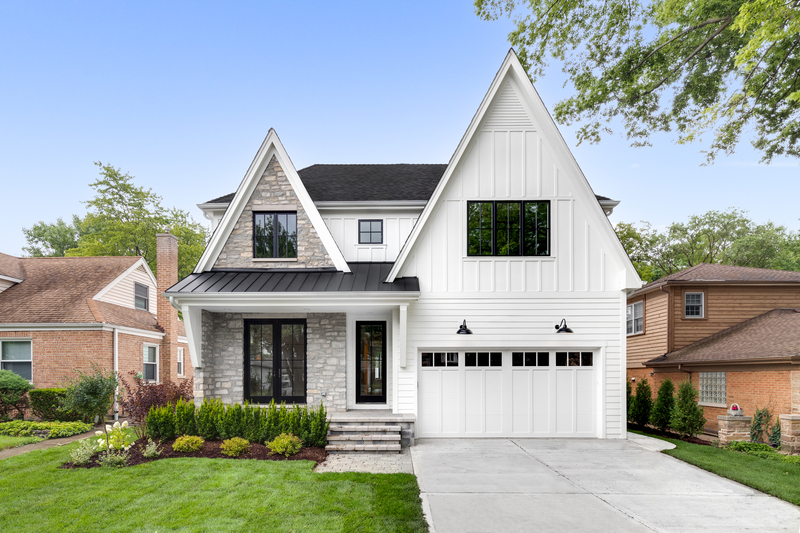
Have you noticed black-framed windows popping up on your social feeds or in new-build homes in your neighborhood? If so, we’re not surprised. #blackwindows are trending.
“We’re seeing a major shift in demand,” says Lizette Sinhart, a Realtor in Westchester, New York. “Almost all new-construction homes are gravitating toward black-framed windows and phasing out the white. ”
But is this a flash-in-the-pan fad or a lasting look? Here’s what you need to know about black window frames:
They’re here to stay
After decades (and decades) of the white-window norm, black frames may seem to be a bit risky at first. But experts agree that your black-windowed home will not be the odd-looking one on the block—and won’t look dated in a few years. “Oftentimes, the initial popularity of a look can work to usher in a new standard,” says Shawn Aherns, senior marketing manager at Andersen Windows & Doors. He predicts black will become a classic—the preference, even, for all home styles in coming years.
They’ll probably cost more
According to Sinhard, you can expect to pay 10% to 15% more for black window frames, but she says the extra cost is worth it: “Whether you are replacing your current windows or building a new home and choosing the black-framed windows, the return on investment will be apparent!”
Aherns agrees, noting that “dark colors often sell at a premium from vinyl window manufacturers as making dark vinyl both heat and fade resistant becomes expensive.” On the other hand, he adds that, “the majority of Andersen’s windows are priced the same regardless of color.”
They work with most home styles
Black windows are rooted in industrial warehouse design and picked up steam as part of the popular farmhouse aesthetic, says Lisa McClelland, senior vice president for Toll Brothers Design Studios. Since then, they’ve made their way into other types of homes, ranging from modern to traditional and everything in between. Aherns adds that one way to think about black frames is as a neutral, rather than a color, something that cooperates with all styles, paint colors, and looks.
 They work inside and out
They work inside and out
Aherns says that the trend applies to exteriors and interiors, noting that sales for “black exterior frames have increased about 70%,” he says, while sales for “black interior frames have almost doubled in popularity.” Outside, black windows create serious curb appeal. Inside, however, is where they work their real magic, according to interior designer Nancy Dale.
“Black windows provide a frame that visually pulls the outside landscape in,” she says. By contrast, white keeps the focus on your interior. Your view is drawn to the wall of your home, which stops the momentum of your gaze outward.
If you’re not quite sure which way to go, Dale points out that sometimes it’s two-tone windows for the win: black frames on the exterior for curb appeal; white on the interior for that bright and airy feel within.
They can blend in or stand out
The design choices you make can either draw attention to or downplay the black window frames, depending on your style preference. “Pairing black windows with a light-colored exterior, such as stucco or white wood siding, will create high contrast and make your windows pop, turning them into focal points,” Aherns says.
On the other hand, if you want your windows to blend in, he suggests choosing a dark exterior and trim. “This makes a bold statement that turns the attention away from architectural details, such as windows, and puts the focus on the entire home.”
When you’re ready to take the leap, Dale recommends keeping the window décor to a minimum. “Black frames often look best with less drapery,” she says. Aherns suggests installing them without any surrounding trim for a clean, sleek look. “This is called ‘drywall return’,” he says. “It really lets the window and the view it frames take center stage.”
Jacqueline Nochisaki, realtor.com

